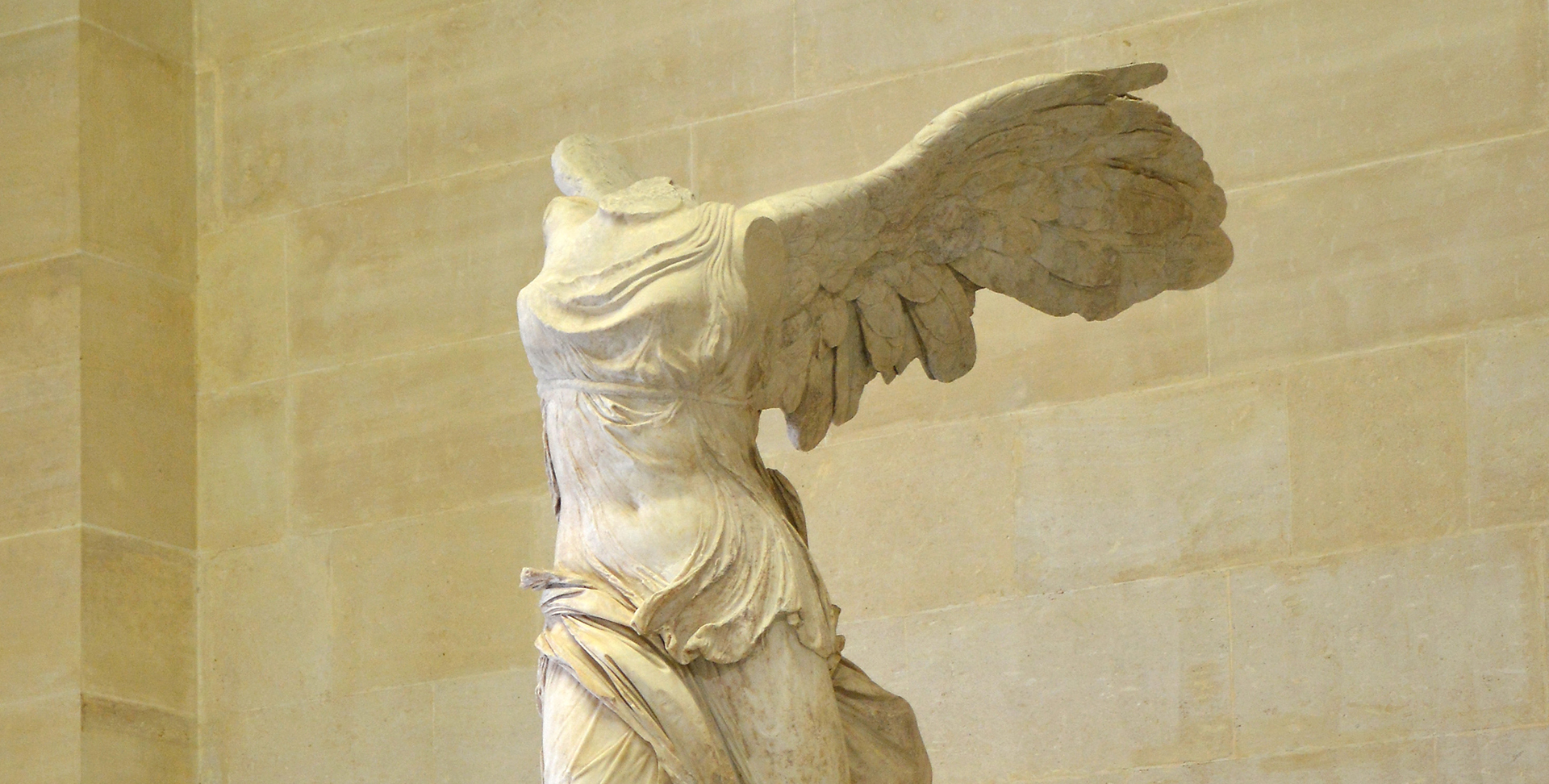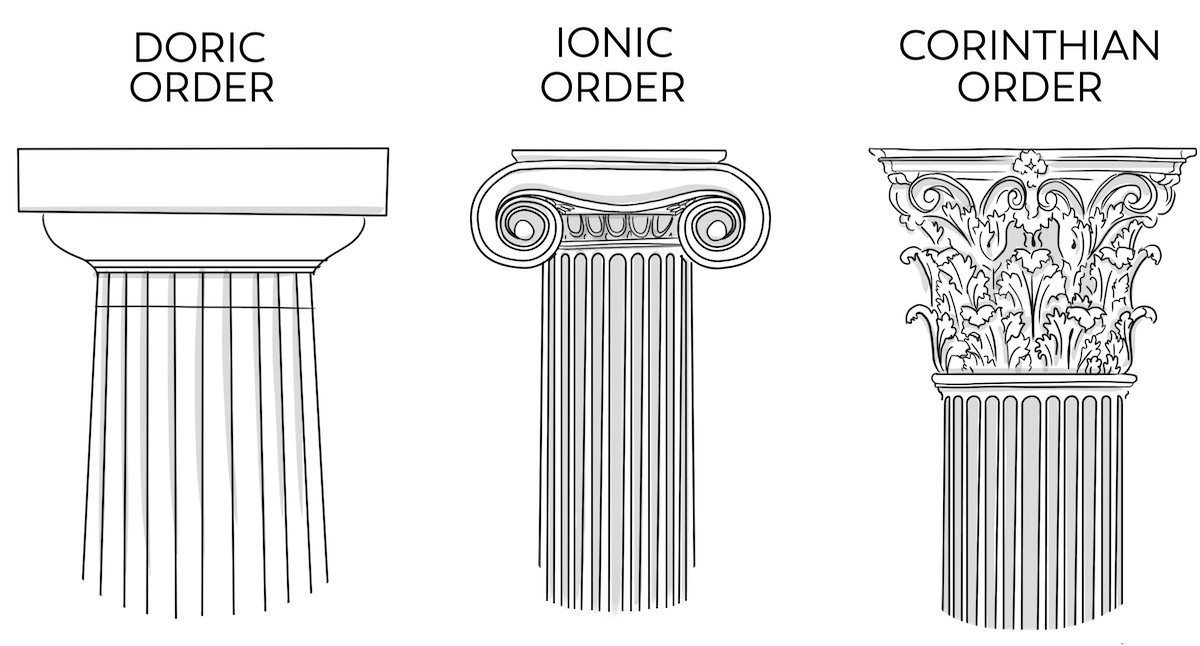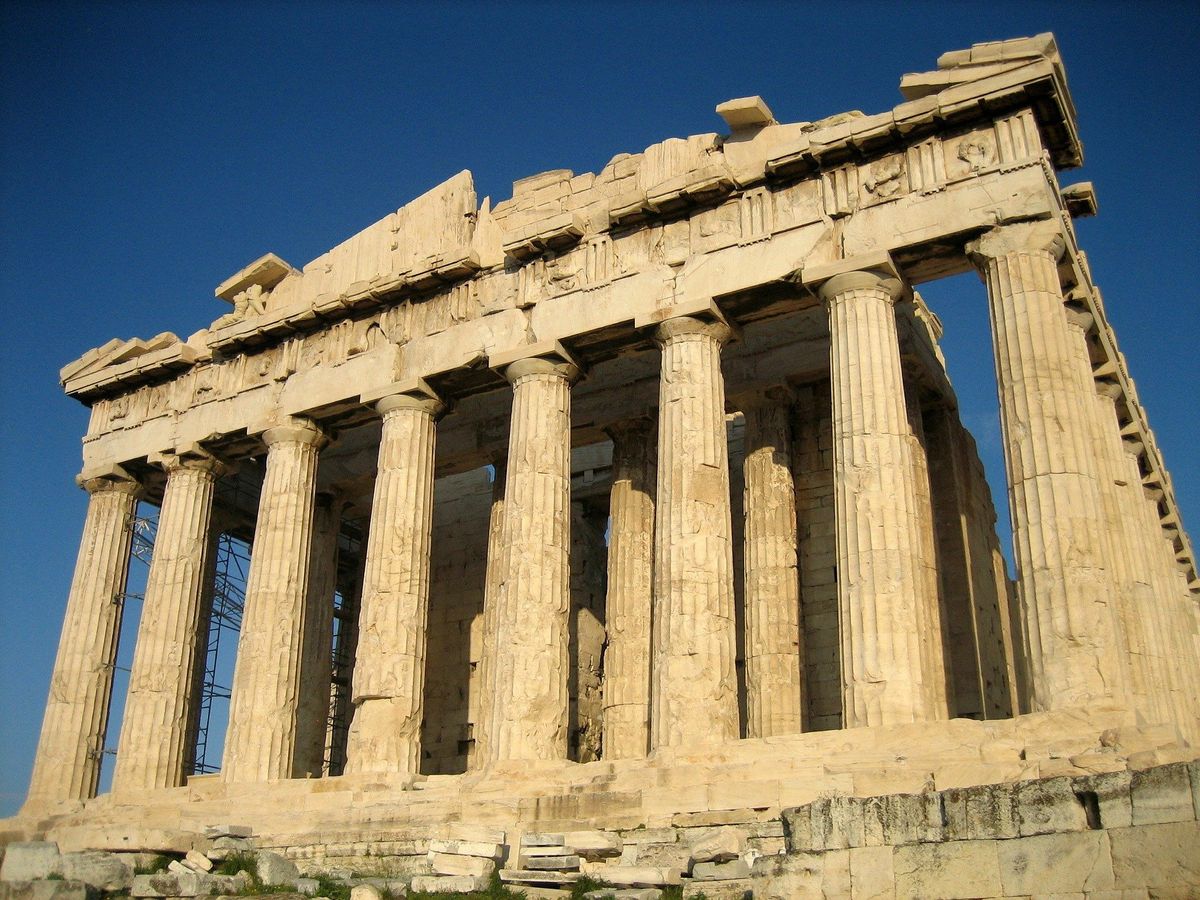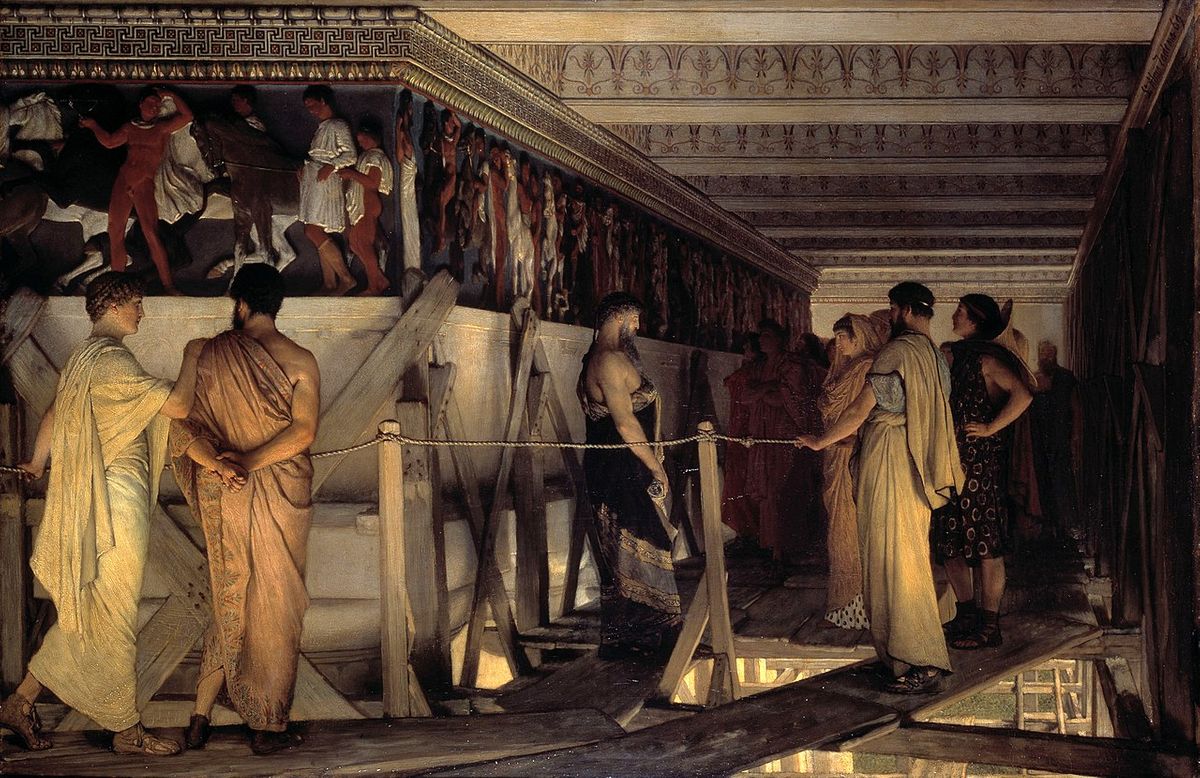


What is the Parthenon’s signature feature? Its columns! This feature can be seen in many monuments in Ancient Greece. Watch out, though, because all columns do not look the same. They follow “orders”, rules that Greek architects established to standardize not only building proportions, but also their decorations.
There were three orders in Greece:


Did you get all that? So which order do the Parthenon’s columns follow?
Doric, of course!

The columns in Greek buildings comply with three orders: Doric, Ionic and Corinthian.
In Greek architecture, were all the columns in a temple pure white? False! The following extract from video game Assassin’s Creed is probably not far from the truth.

That’s right, everything was painted in very bright colours. Over time, these faded. For a long while, therefore, we believed that Greek art was white, like marble, the model that Western architects and sculptors followed for centuries.
What a shock, many centuries later, to discover bits of remaining paint!

During the 19th century, it was discovered that Greek art was not white, but brightly coloured.

Let us return to the Parthenon: one name was very clearly linked to it, that of Phidias. The latter was one of the most famous sculptors of the 5th century BC and it was probably he who orchestrated the decoration of the Parthenon.
In particular, we credit him with a gigantic sculpture of the goddess Athena, entirely covered in gold and ivory! It was supposed to be for decorations inside the Parthenon but has since disappeared.

What does remain, however, are the carved friezes and pediment, representing myths and a long procession of characters paying tribute to Athena.

Phidias, the famous 5th-century BC sculptor, probably designed the Parthenon’s decorations.
Greek craftsmen were overflowing with imagination, both for their objects’ shapes (they were often used for banquets) or their varied decorations. The two major categories were:

Greek pottery may be painted in black on the clay, or the reverse may be done, leaving red figures on a black painted background.
Up to now, we have only seen examples of marble sculptures, but from the classical period onwards, the most popular material was bronze! In that case, why have we found so few examples?
The reason for this is that bronze, unlike marble, is a precious material that can be easily melted down for reuse in another form. Throughout the centuries, antique works have therefore been melted down and have disappeared forever.
Fortunately, these lost originals have sometimes been copied in stone and have been handed down to us in that form.

Greek art contained a great number of bronze sculptures, which have been melted down, but of which stone copies remain.
All good things come to an end. The Classical period came to a close in 323 BC, giving way to the Hellenistic period, and that changed art!
The following are the main characteristics in sculpture:

Look out, Hellenistic art is much more than sculpture and we should not forget fine arts such as mosaics, painting and architecture… Hellenistic art is global.

Hellenistic art, which covers all forms, has a specific focus on the moving body.
The Hellenistic period began on a very specific date: 323 BC, which corresponds to the death of Alexander the Great, one of the most famous monarchs of the Antiquity period.


The Hellenistic period began with the death of the great monarch Alexander the Great, who extended his empire through numerous conquests.

"*" indicates required fields